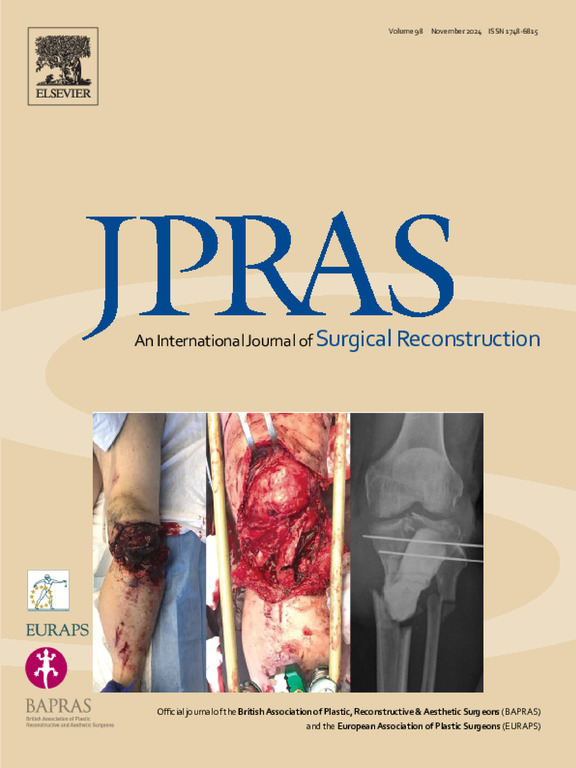Delineating upper limb longitudinal recovery after simple mastectomy, implant or autologous breast reconstruction using wearable activity monitors
IF 2
3区 医学
Q2 SURGERY
Journal of Plastic Reconstructive and Aesthetic Surgery
Pub Date : 2025-02-13
DOI:10.1016/j.bjps.2025.02.012
引用次数: 0
Abstract
Introduction
The demand for breast reconstruction has increased owing to the established benefits for patients. Given the long-term survivorship, objective data are vital to aid patients in making treatment decisions. This prospective longitudinal observational study was carried out to objectively quantify the impact of simple mastectomy (Mx), implant-based reconstruction (IBR) and deep inferior epigastric perforator (DIEP) on upper limb (UL) activity using wearable activity monitors (WAMs).
Methods
Forty-eight consecutive patients who underwent breast and reconstructive surgery were identified from operating schedules. Recruited participants were invited to wear WAMs on both wrists for an average of 3 days preoperatively, for 2 weeks post-operatively and more than 6 months post-operatively.
Results
A significantly greater reduction in gross physical activity as a percentage of preoperative activity was observed in DIEP compared with Mx and IBR patients across week 1 (median: 40% versus 62% versus 62%; p<0.001) and week 2 (median: 60% versus 77% versus 84%; p<0.001). In the long-term follow-up, the average activity had reached or exceeded their baseline levels for all operative procedures, Mx=114%, IBR=98% and DIEP=103%. DIEP was an independent predictor of recovery in weeks 1 (F=4.796, p=0.043) and 2 (F=7.306, p=0.015).
Conclusion
Despite DIEP patients having the lowest UL activity level in the acute post-operative period when compared with Mx and IBR patients, average activity levels returned to baseline in the long-term for all procedures. Objective monitoring of recovery using WAMs can support the development of a personalised rehabilitation programme for those at risk of developing complications.
求助全文
约1分钟内获得全文
求助全文
来源期刊
CiteScore
3.10
自引率
11.10%
发文量
578
审稿时长
3.5 months
期刊介绍:
JPRAS An International Journal of Surgical Reconstruction is one of the world''s leading international journals, covering all the reconstructive and aesthetic aspects of plastic surgery.
The journal presents the latest surgical procedures with audit and outcome studies of new and established techniques in plastic surgery including: cleft lip and palate and other heads and neck surgery, hand surgery, lower limb trauma, burns, skin cancer, breast surgery and aesthetic surgery.

 求助内容:
求助内容: 应助结果提醒方式:
应助结果提醒方式:


